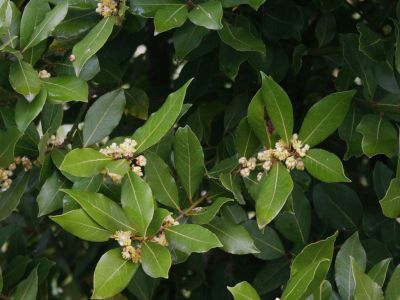About Sweet Bay Leaf Trees
Sweet bay leaf tree is frost tender and is only hardy to USDA plant hardiness zone 7. It prefers a full sun exposure and blooms in spring to summer. The leaves are leathery and stiff with a strong mid-rib. Crushing the leaf releases aromatic oil that is the source of the flavoring for foods. Bay tree care is very simple and straightforward but protection must be given to these trees in cold climates.
How to Grow a Bay Leaf Tree
Sweet bay trees should be planted in well drained soil with an incorporation of generous amounts of compost. The trees can be kept at a smaller growth habit if grown in a container, which also allows the gardener to bring the tree indoors or to a sheltered location when cold temperatures threaten. Plant the trees at the same level in soil that they were grown in their nursery pot. Planting bay trees is best done in early spring when they are semi-dormant. You can grow a bay tree simply as an ornamental plant or as part of your culinary arsenal. Growing a bay tree from cuttings or air layering is the common form of propagation. Cuttings should be taken in late summer and set into a soil-less medium. Air layering requires the gardener to wound the tree and pack it with sphagnum moss until roots form in the wound. The stem or branch can then be cut off and planted. Protect sweet bay trees from heavy winds, which are damaging to the weak wood. Bay trees do not need feeding or supplemental watering in winter. Bay trees can be trained into a topiary or another form with careful management when the plant is young. Place a potted plant in an area where temperatures range from 45 to 64 F. (7 to 17 C.) and where sunlight is from a southern or eastern direction.
Harvest and Use of Sweet Bay Leaf Tree
Leaves may be harvested at any time but the best flavor can be had from larger, mature leaves. Lay the leaves out to dry and crush them or use them whole but remove before eating. The leaves are a common ingredient in the French seasoning packet, bouquet garni, which is wrapped in cheesecloth and steeped in soups and sauces. It is worth learning how to grow a bay leaf tree for ornamentation and fresh, wholesome seasoning.
